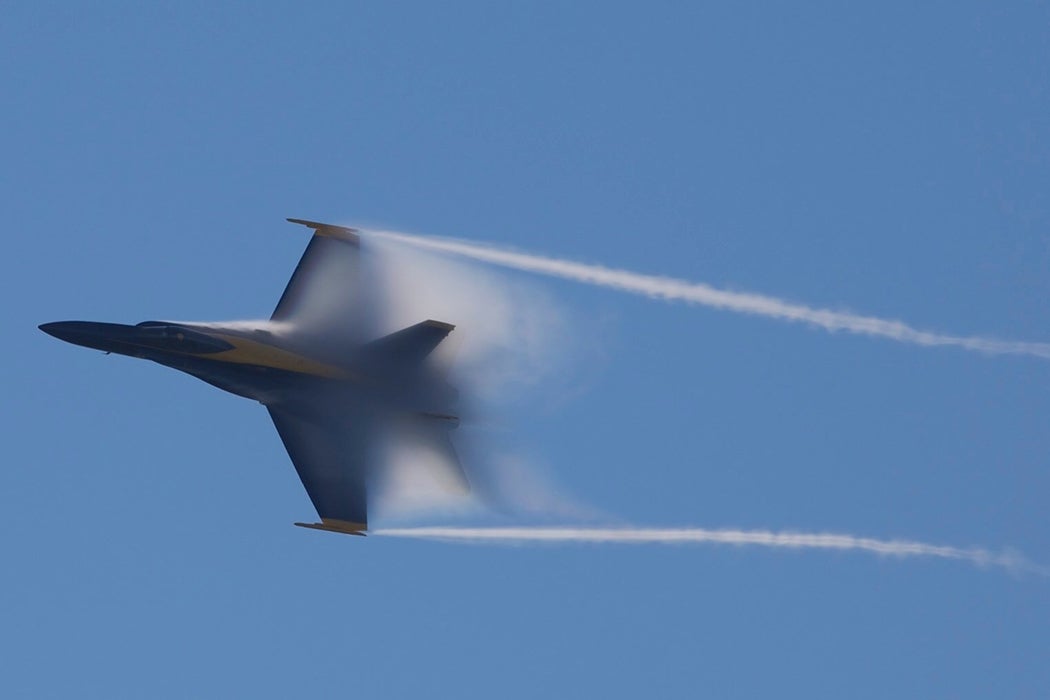Almost every air traveler wishes they could get their flight over with faster and get to their destination. To that end, fifteen years after the commercial failure of the Concorde, airlines are again investigating the potential for supersonic flight. The Concorde’s top speed, slightly more than twice the speed of sound, is much faster than typical passenger aircraft, so the time savings are substantial. Unfortunately, there are some downsides.
Sonic booms are one big disadvantage of the supersonic jet. As an aircraft approaches the speed of sound, pressure waves form in front and behind the plane. Think of a ship with both a bow wake and the wake that trails behind it. As the plane’s speed increases, the pressure waves can’t get out of each other’s way fast enough and they start piling up. At the sound barrier, the waves form into one large shockwave in front of and behind the plane, making the distinctive “boom boom” sound. Since the plane is flying faster than the sound, people on board don’t hear the boom, but everyone else in range sure does.
Sonic booms aren’t just loud; they can also cause physical damage, breaking glass, cracking plaster, and shaking objects off shelves. A boom from a single fighter aircraft in 1966 dislodged tons of rock, crushing archaeological sites in the famous Canyon de Chelly National Monument. Booms in other countries have caused cattle to stampede and even caused a roof to collapse, killing three French workers. Currently the primary culprits are military aircraft. Some militaries eventually developed a procedure for sonic boom damage reimbursement.
When it comes to commercial aircraft, the risks magnify. As Thomas Grose explains in ASEE Prism, the magnitude of the boom is partially proportional to the size of the aircraft. If one fighter plane can dislodge eighty tons of rock, imagine what a supersonic jumbo jet could do.
The issues don’t end there. Moving an airplane so quickly requires a ton of power, and larger engines. Current supersonic engines use vastly more fuel than conventional engines; according to Grose, even future more efficient models will probably still be less efficient. Air travel is already a major source of greenhouse gas emissions; reviving supersonic flight will worsen the problem.
Moreover, the two priorities, reducing noise and increasing fuel efficiency, are at odds. Grose explains how various engineering fixes designed to reduce engine noise and limit boom intensity also tend to decrease fuel efficiency. Longer wings are more efficient at subsonic speeds. Swept-back wings are more efficient at supersonic speeds but produce larger booms. One weird solution might be an aircraft that does both: the aircraft cabin rotates in flight to allow longer wings during takeoff and landing while sweeping back in flight over oceans or unpopulated areas. The whole thing looks something like a flat starfish and is apparently quite fuel efficient. Still, if business travellers really want to save travel time, there’s always zero-emissions teleconferencing.







